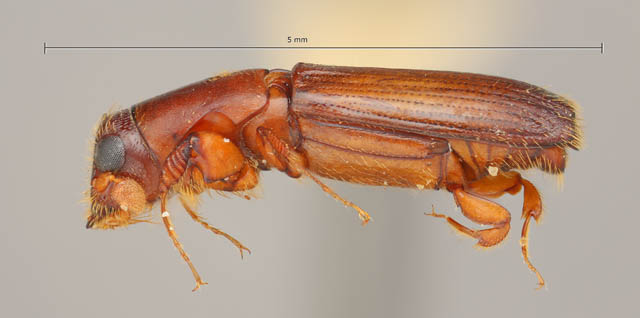Oxoplatypus quadridentatus (Olivier 1795)


 Images: Displaying 1 to 8 of 18
Images: Displaying 1 to 8 of 18 




 Oxoplatypus quadridentatus (male)
Oxoplatypus quadridentatus (male) |
 Oxoplatypus quadridentatus (male)
Oxoplatypus quadridentatus (male) |
 Oxoplatypus quadridentatus (male)
Oxoplatypus quadridentatus (male) |
 Oxoplatypus quadridentatus (male)
Oxoplatypus quadridentatus (male) |
 Oxoplatypus quadridentatus (male)
Oxoplatypus quadridentatus (male) |
 Oxoplatypus quadridentatus (male)
Oxoplatypus quadridentatus (male) |
 Oxoplatypus quadridentatus (female)
Oxoplatypus quadridentatus (female) |
 Oxoplatypus quadridentatus (female)
Oxoplatypus quadridentatus (female) |
| Next > |

Oxoplatypus quadridentatus (female) (by TH Atkinson, Biodiversity Center, University of Texas at Austin). This image is the property of the National Museum of Natural History, Smithsonian Institution, Washington, D.C., used under CC0 license
 Summary of Information
Summary of Information





SYNONYMY
- Oxoplatypus quadridentatus (Olivier 1795) Ent. Hist. Nat. Insectes Coleopt. 4(78): 5
- Platypus quadridentatus (Olivier 1795) Ent. Hist. Nat. Insectes Coleopt. 4(78): 5
- Scolytus quadridentatus Olivier 1795. Ent. Hist. Nat. Insectes Coleopt. 4(78): 5
- Platypus blanchardi Chapuis 1865. Monographie des Platypides: 219
- Platypus disciporus Chapuis 1865. Monographie des Platypides: 219
- Platypus flavicornis disciporus LeConte 1876. Proc. Amer. Philos. Soc. 15: 359
DISTRIBUTION.
Numbers in parentheses after each geographic unit are the number of distinct collection events in the database for that unit. For exotic species generally only countries are listed for localities outside the New World. For further information on published sources of distribution, check the REFERENCES section.
Distribution Comments. Southern Rocky Mountains, Sierra Madre Occidental, Sierra Madre Oriental in pine oak communities. Disjunct distribution in eastern North America.
There are no distribution records in the database
HOSTS
Numbers in parentheses after each host family, genus, or collection method are the number of distinct collection events in the database for that host or method.
REFERENCES
The following are important recent monographs, catalogs, and supplements to catalogs that refer to this species. The specific page on which the reference is made is shown in pink at the end of the reference. In the case of Wood (1982) and Wood & Bright (1992) clicking on the reference page will link to a digital version of the work in question.
- Wood, S.L., Bright,D.E. 1992. A catalog of Scolytidae and Platypodidae (Coleoptera), Part 2. Taxonomic Index. Great Basin Nat. Mem. 13:1-1553 (vol. A, B). [1174]
The following are references from which host and distribution data have been input into the database. If one of the above monographs or catalogs also appears in this list, it means that most relevant collection event data have been included.
- Atkinson, T.H. 2024. New species, new synonymy, taxonomic notes and new records of bark and ambrosia beetles from the southwestern United States and northern Mexico (Coleoptera: Curculionidae: Platypodinae and Scolytinae). Zootaxa 5424 (2): 151-175.
- Atkinson, T.H.; Martínez F., E, Saucedo C., E, Burgos S., A 1986. Scolytidae y Platypodidae (Coleoptera) asociados a selva baja caducifolia y comunidades derivadas en el estado de Morelos. Fol. Entomol. Mex. 69: 41-82.
- Atkinson, T.H.; Rabaglia,R.J.; Peck,S.J.; Foltz,J.L. 1991. New records of Scolytidae and Platypodidae from the United States and Bahamas. Coleopterists Bull. 45(2): 152-164.
- Beal, J.A., Massey, C.L. 1945. Bark beetles and ambrosia beetles (Coleoptera: Scolytoidea) with special reference to the species ocurring in North Carolina. Duke Univ. School of Forestry Bull. 10 : 1-178.
- Blackman, M.W. 1922. Mississippi Bark Beetles. Miss. Agric. Exp. Sta. Tech. Bull. 11: 1-130.
- Staines, C.L. 1982. Distributional records of Platypodidae (Coleoptera) in Maryland. Proc. Entomol. Soc. Wash. 84: 858-859.
- University of Arizona Insect Collection 2016. SCAN: Symbiota Collections of Arthropods Network. http://symbiota4.acis.ufl.edu/scan/portal/collections/misc/collprofiles.php?collid=11.
- Wood, S.L. 1958. Some virtually unknown North American Platypodidae (Coleoptera). Great Basin Naturalist 18(1): 37-40.
- Wood, S.L.; Bright, D.E. 1992. A catalog of Scolytidae and Platypodidae (Coleoptera), Part 2. Taxonomic Index (Volumes A,B). Great Basin Nat. Mem. 13: 1-1553.
 Distribution Map
Distribution Map





Maps automatically open at the center of the plotted points and the scale is set to encompass all map points. Maps can be resized (scale bar at upper left) and the center moved (place cursor over map and drag) to see other parts of the distribution of the species. Clicking on a map marker will pull up collection event data and a literature citation if present. If any errors are found, please refer to the "series code" which is a unique identifier for a database record in any communications). Coordinates have not been entered for all collection records. Localities outside the New World are not plotted, even though they are listed in the distribution summary and in the table of records.
There are no distribution records in the database
 Collection Records
Collection Records





There are no distribution records in the database
Return to top of page
